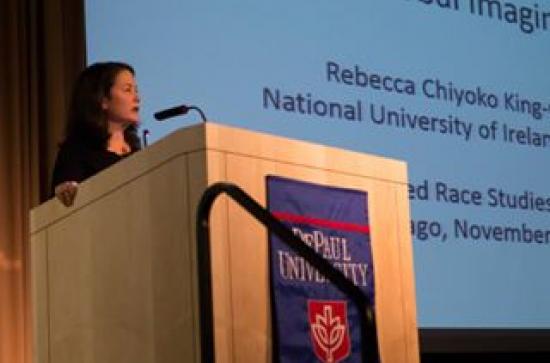A True History Full of Romance: Mixed marriages and ethnic identity in Dutch art, news media, and popular culture (1883–1955) by Marga Altena (review)
Journal of Colonialism and Colonial History
Volume 15, Number 3, Winter 2014
DOI: 10.1353/cch.2014.0039
Eveline Buchheim, Researcher
NIOD Institute for War, Holocaust and Genocide Studies, Amsterdam, The Netherlands
Altena, Marga, A True History Full of Romance: Mixed Marriages and Ethnic Identity in Dutch Art, News Media, and Popular Culture (1883-1955) (Amsterdam: Amsterdam University Press, 2012).
Even before the Second World War, cases of interracial unions had been recorded in the Netherlands, but the greater part of the Dutch public in the late nineteenth and early twentieth centuries still considered these bonds extraordinary. If the possibility of such unions crossed the minds of common Dutch citizens at all, they were mainly associated with colonial life in the Dutch East Indies. Although certainly not unambiguous aspects of colonial life, mixed unions were part and parcel of the Dutch colonial experience. Even in this colonial context, however, unions of White women with Indigenous men were extremely unusual. A European woman who entered such a marriage excluded herself from the community of Europeans. In the Netherlands itself, the term “mixed marriages” was used during this period primarily to refer to unions either outside the individual’s social class or with spouses of a different religious background, an important distinguishing feature in strongly “pillarized” Dutch society. In her book, Altena presents three cases of Dutch White women who, against all odds, married men of color. They did so in a period when it was still quite unusual and—perhaps as a result of this uniqueness—all three of the analyzed marriages figured prominently in the news. The unions were also represented in other cultural media expressions such as fiction. This gives Altena the opportunity to analyze how ethnic identity was constructed in Dutch media from various angles.
Altena’s first case concerns the marriage of Frederick Taen, the son of a Chinese father and an English mother, to the Dutch woman Mia Cuypers. It is interesting to note that Taen’s partial European roots were apparently completely lost in the public representation. Was this something Taen did on purpose? He might have deemed Chinese roots favorable for his business trade. Cuypers was the daughter of a famous Dutch architect, P.J.H. Cuypers, known among other works for building the Rijksmuseum. The artistic background of the bride and the affluence of the groom made the union interesting enough to be represented in several instances of cultural expression. Mia Cuypers was a special woman in other respects as well; she went against the grain multiple times, first by marrying Frederick Taen, then by divorcing him, and, later, by not totally denying the misalliance.
The second case is the marriage of Johanna van Dommelen and Angus Montour (Twanietanekan), also known as American Horse, in 1906, the bride an unmarried mother from The Hague, the groom a Mohawk widower from eastern Canada. Altena analyzes the press coverage in both countries. She makes it very clear that for both the bride and the groom their union had several advantages, and shows how they used the media attention to improve their lives.
The last case that Altena describes is that of the marriage between Marie Borchert and Joseph Sylvester in 1928, in the town of Hengelo. Borchert was the daughter of a well-to-do local family, Sylvester a salesman and entertainer. This couple clearly orchestrated their public performance. This is understandable partly because of how Sylvester earned a living. The case gets really interesting when Altena recalls how the couple used press coverage to raise awareness among their fellow citizens about the use of Black stereotypes.
By analyzing the three marriages on the basis of how they figured in the public domain, Altena wanted to investigate the representation of ethnic identity in Dutch culture between 1883 and 1955. Altena’s period of research seems rather arbitrary, and primarily relates to events in the personal lives of the three couples. Taen and Cuypers met in 1883 at the International Colonial and Export Trade Exhibition in Amsterdam. The year 1955 marks Joseph Sylvester’s death. In her analysis, Altena focuses on the micro-histories and does not pay much attention to the influence of the spirit of the age under investigation. Her paragraph on the historical and sociocultural context provides a broad outline, but does not really elaborate on the appraisal or disapproval of foreigners in relation to larger historical events. There is no special attention paid to the changing colonial relationship between the Dutch East Indies and the Netherlands of the late nineteenth and early…
